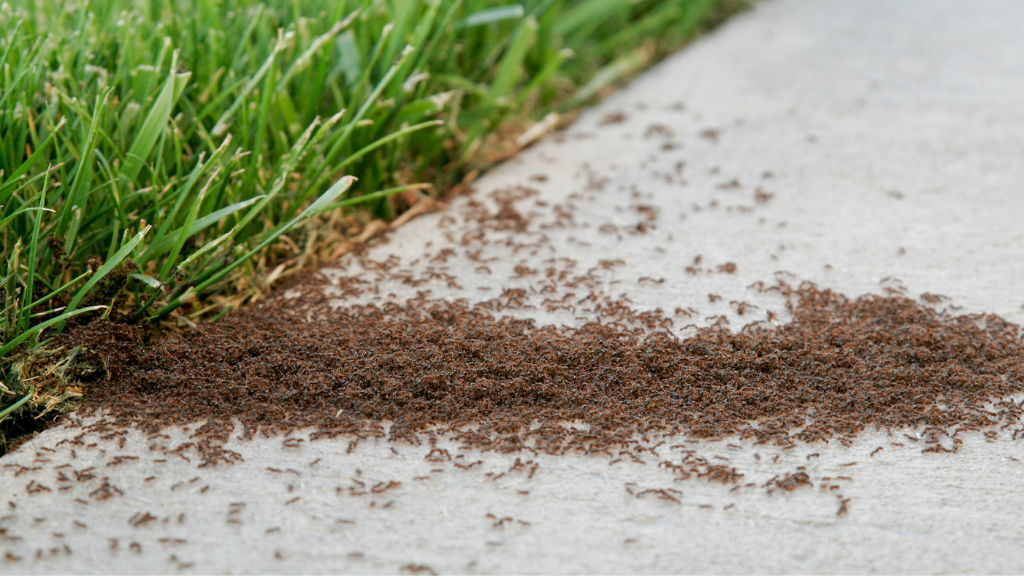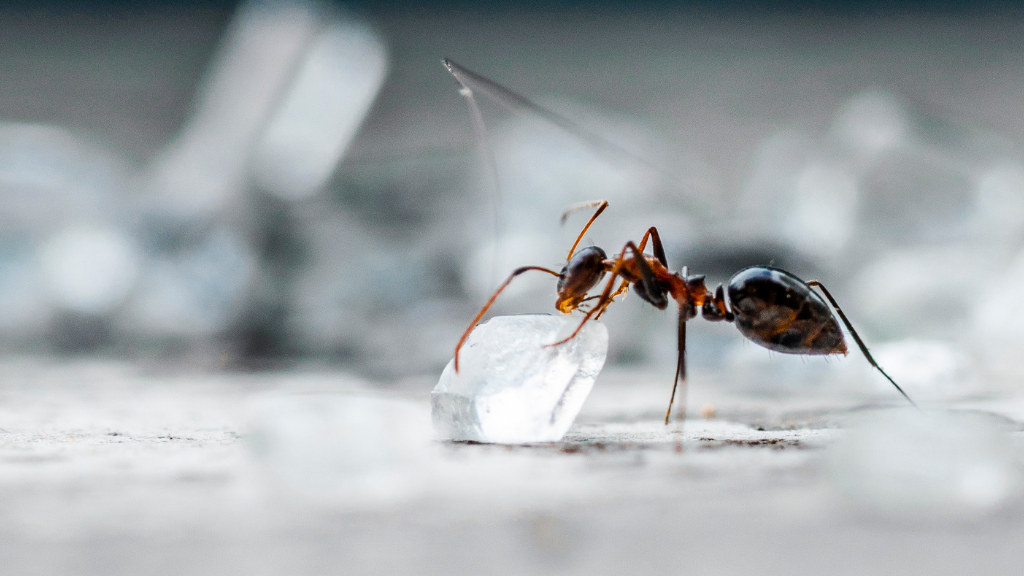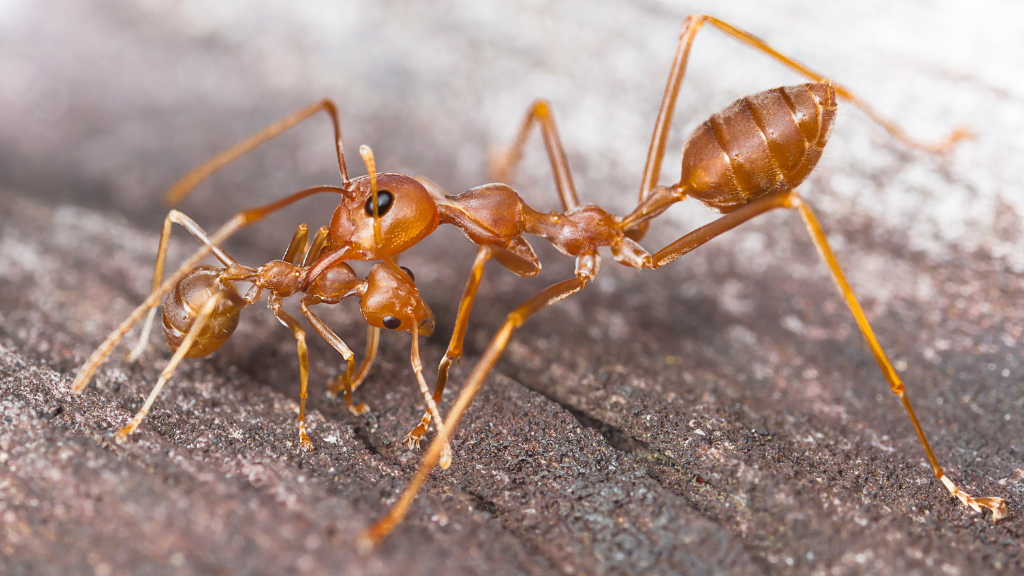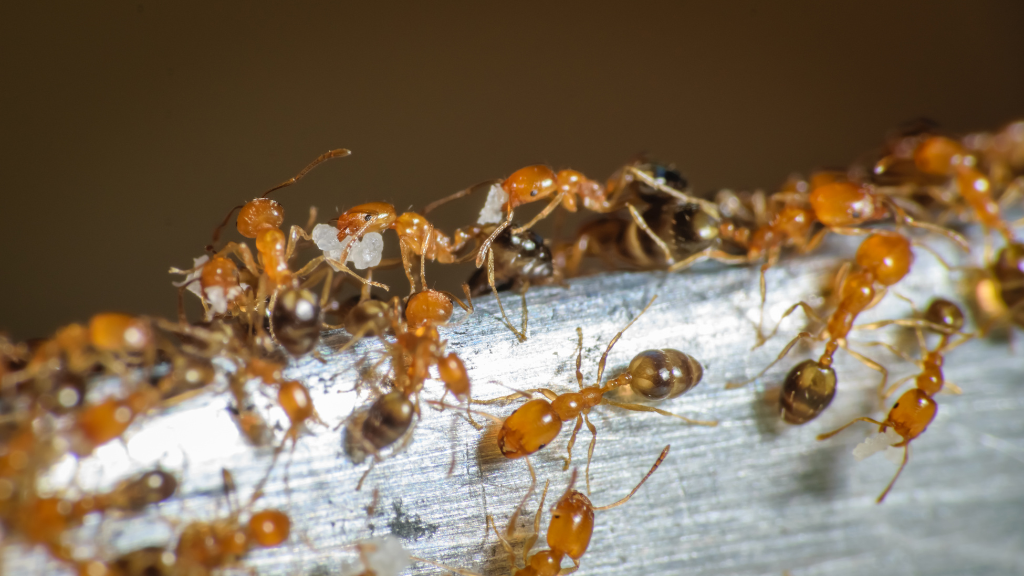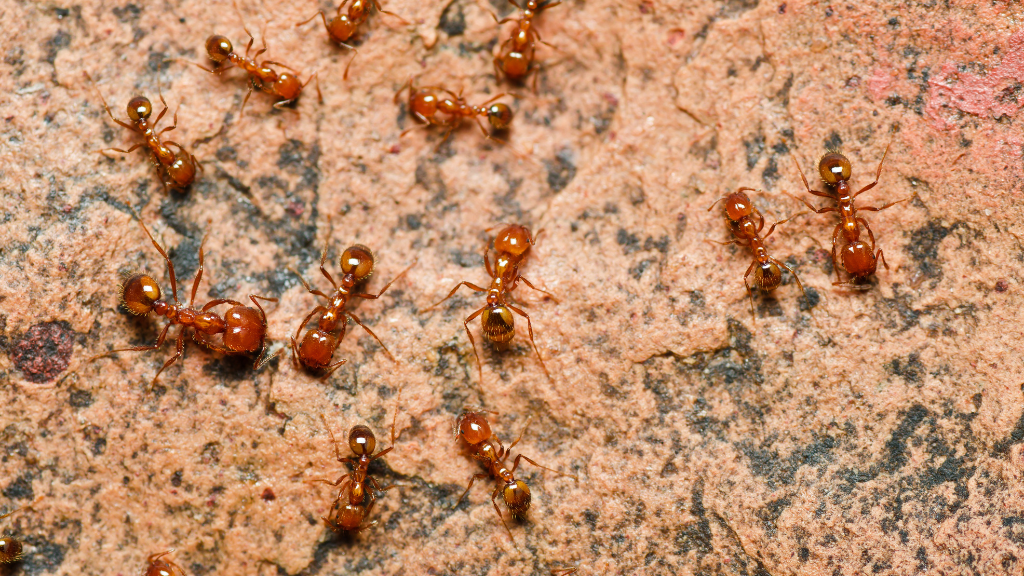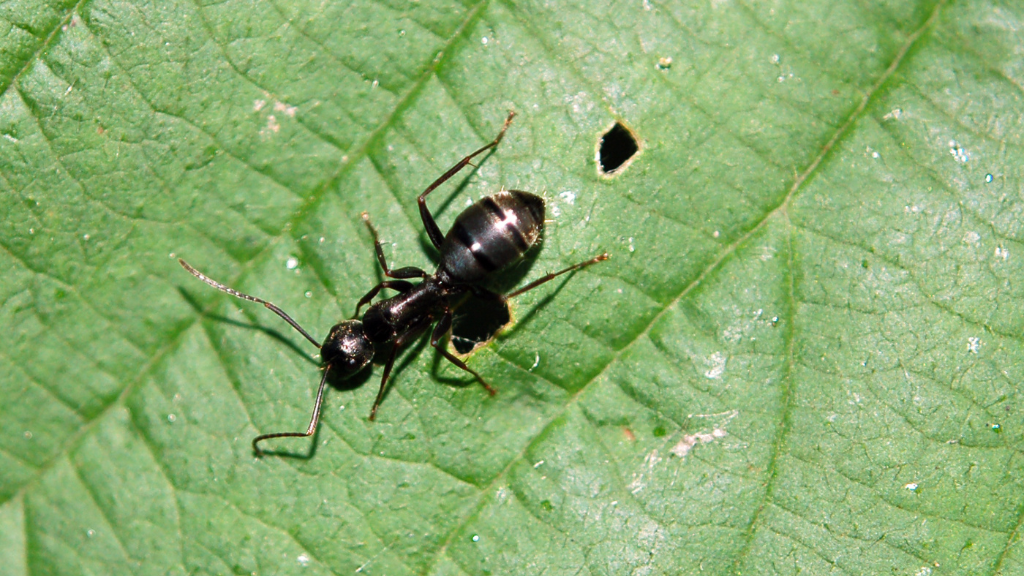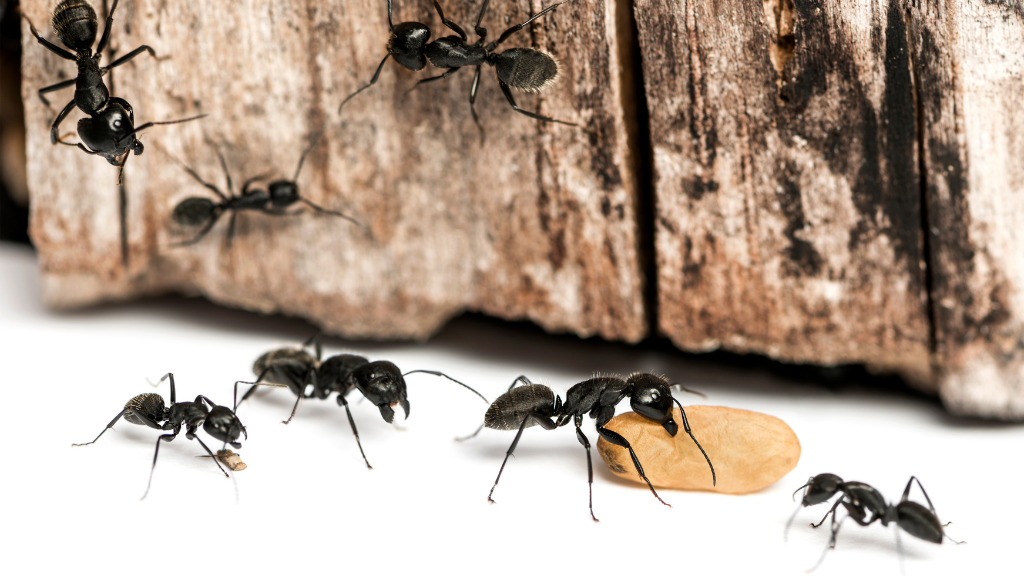Common Ants and How to Identify Them
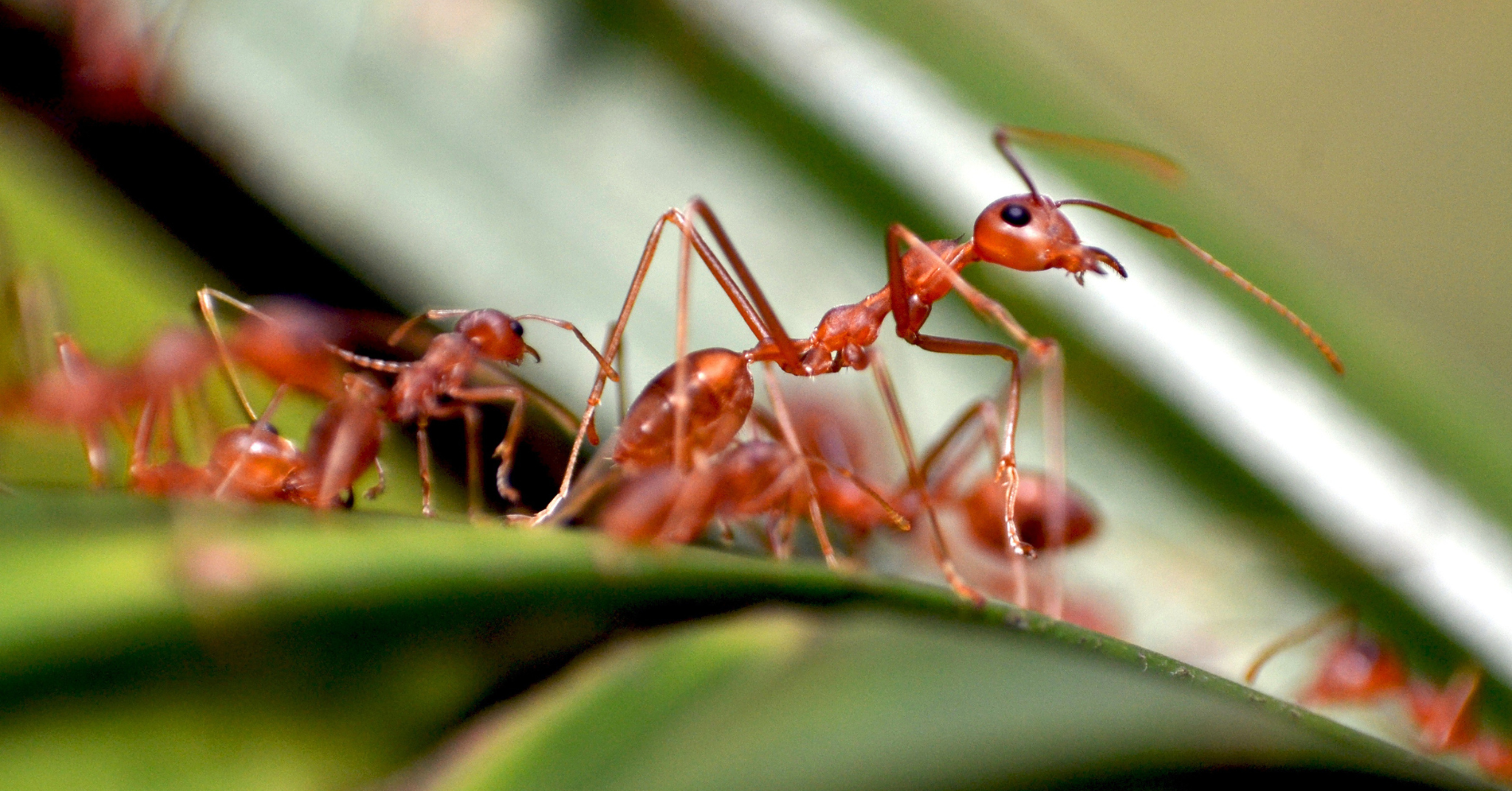
Ants spoil a lot more than picnics. Depending on the species, ants can disrupt the ecosystem of your garden, track bacteria and harmful pathogens across your countertops, and even cause serious structural damage. There are over 700 ant species across the world, but here’s a look at the most common ants in the United States.
SEVEN TYPES OF ANTS
While many ants appear alike to the untrained eye, proper identification is crucial to effective pest control. What works for one species may not work for another, and when it comes to using ant bait and locating nests, a proper identification makes the difference between quickly reclaiming your space and facing a prolonged infestation.
PAVEMENT ANTS
Pavement ants are found in and around sidewalks, driveways, and building foundations. They build small nest mounds in the earth either underneath or around stones, concrete, and pavement. At barely under ¼ inch and dark brown or black in color, the worker ants forage for a variety of foods including sweets, meat, pet food, fatty materials, insects, and other scraps.
ODOROUS HOUSE ANTS
The common name of these brown and black ants (“odorous house ants“) gives two clues as to their characteristic and behavior: they have a distinctly rotten smell when crushed and are commonly found in and around homes. Workers measure up to ⅛ inch and have an uneven thorax when viewed along the side. Outside, these ants make shallow nests under debris, stones, and wood; inside, they congregate within walls and near pipes and heaters. Also known as sugar ants, they prefer a diet of sweets and nectars.
FIRE ANTS
Contrary to popular belief, the bites from this aggressive ant species aren’t bites at all. They’re actually venomous stings from a stinger located on the end of their reddish bodies. While the fire ant workers themselves are small (about ⅛ inch), their mounds can be quite large—up to 4 feet wide and over 1 foot high. Fire ants are most likely to attack when their mound is disturbed or threatened. These omnivorous pests feast on both plant and animal materials.
PHARAOH ANTS
A non-native species to the United States, pharaoh ants are frequently seen indoors during the colder months. They most likely originated in Africa and seek as much warmth as they can find. Their diet, not unlike other species, is characterized by a love of sweets, but they feast equally on fatty materials and insects as well. Very small at 1⁄16 inch with golden bodies, they nest in warm, moist places such as cabinets, behind baseboards, within walls, and beneath papers or drapes. When nesting outside, pharaoh ants find shelter in moist cracks and crevices.
THIEF ANTS
The smallest of the bunch, thief ant workers measure at just 1⁄32 inch. Unlike other ants, their diet is full of protein and fats. These tiny light brown or yellow-ish ants travel from their small, shallow nests to other ant nests to swipe the larvae and pupae for their next meal. Thief ants build their colonies under rocks, behind baseboards, and beneath debris both inside and outside.
ARGENTINE ANTS
Colonies of Argentine ants can include over a million ants—a particularly impressive feat considering their nests usually only mound 1-2 inches above the ground. These ants have a distinct sweet tooth, and the ⅛ inch workers forage for sweets and oils in defined lines on the ground, up walls and trees, and beneath rugs indoors.
CARPENTER ANTS
Carpenter ants are easily mistaken for termites since both pests damage wooden structures by boring into wood to create nests. Unlike termites, however, carpenter ants don’t eat the wood they bore. Instead, they have an omnivorous varied diet. These large (¼-½ inch), reddish-black ants nest both indoors and out and prefer moist spots within wooden structures, rotting trees, and old logs.
If you’ve got ants invading your home, a pest control professional can help you identify the species and implement an effective treatment plan. Since not all ants have the same diet, behavior, and habitat, it’s essential to match the correct treatment to the type of ant. Contact us today to evict unwanted ants. No matter the size of your infestation, we can help.
SOURCES
http://ipm.ucanr.edu/m/pn7411-3.html
https://extension2.missouri.edu/g7392
https://extension.umn.edu/insects-infest-homes/ants
https://www.pestworld.org/pest-guide/ants/
http://ipm.ucanr.edu/TOOLS/ANTKEY/odorbait.html
http://ipm.ucanr.edu/PMG/PESTNOTES/pn7411.html
https://extension.umn.edu/insects-infest-homes/ants#pharaoh-ants-42363
https://cisr.ucr.edu/invasive-species/argentine-ant
http://ipm.ucanr.edu/TOOLS/ANTKEY/pharaoh.html
http://ipm.ucanr.edu/TOOLS/ANTKEY/thief.html
http://ipm.ucanr.edu/TOOLS/ANTKEY/pavement.html
http://ipm.ucanr.edu/PMG/PESTNOTES/pn7416.html

